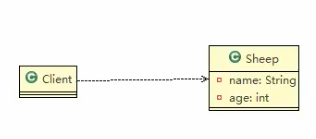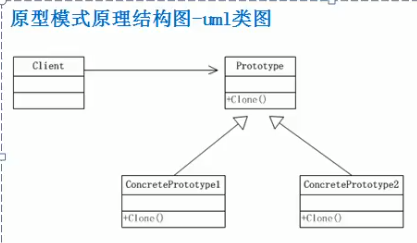原型模式
克隆羊问题
现在有一只羊tom,姓名为: tom,年龄为1,颜色为: 白色,请编写程序创建和tom羊属性完全相同的10只羊..
实践出真知
- 最简单的思路
package com.atguigu.prototype;
public class Sheep {
private String name;
private int age;
private String color;
public Sheep(String name, int age, String color) {
this.name = name;
this.age = age;
this.color = color;
}
@Override
public String toString() {
return "Sheep{" +
"name='" + name + '\'' +
", age=" + age +
", color='" + color + '\'' +
'}';
}
public String getName() {
return name;
}
public void setName(String name) {
this.name = name;
}
public int getAge() {
return age;
}
public void setAge(int age) {
this.age = age;
}
public String getColor() {
return color;
}
public void setColor(String color) {
this.color = color;
}
}
package com.atguigu.prototype;
public class Client {
public static void main(String[] args) {
// 传统的方法
Sheep sheep = new Sheep("tom", 1, "白色");
// 用第一次的sheep 的信息去初始化 下一只羊的属性
Sheep sheep2 = new Sheep(sheep.getName(), sheep.getAge(), sheep.getColor());
Sheep sheep3 = new Sheep(sheep.getName(), sheep.getAge(), sheep.getColor());
Sheep sheep4 = new Sheep(sheep.getName(), sheep.getAge(), sheep.getColor());
Sheep sheep5 = new Sheep(sheep.getName(), sheep.getAge(), sheep.getColor());
Sheep sheep6 = new Sheep(sheep.getName(), sheep.getAge(), sheep.getColor());
Sheep sheep7 = new Sheep(sheep.getName(), sheep.getAge(), sheep.getColor());
Sheep sheep8 = new Sheep(sheep.getName(), sheep.getAge(), sheep.getColor());
Sheep sheep9 = new Sheep(sheep.getName(), sheep.getAge(), sheep.getColor());
System.out.println(sheep);
System.out.println(sheep2);
System.out.println(sheep3);
System.out.println(sheep4);
System.out.println(sheep5);
System.out.println(sheep6);
System.out.println(sheep7);
System.out.println(sheep8);
System.out.println(sheep9);
}
}
```shell script Sheep{name='tom', age=1, color='白色'} Sheep{name='tom', age=1, color='白色'} Sheep{name='tom', age=1, color='白色'} Sheep{name='tom', age=1, color='白色'} Sheep{name='tom', age=1, color='白色'} Sheep{name='tom', age=1, color='白色'} Sheep{name='tom', age=1, color='白色'} Sheep{name='tom', age=1, color='白色'} Sheep{name='tom', age=1, color='白色'}
Process finished with exit code 0
```
传统方式解决克隆羊问题
传统的方式的优缺点
优点是比较好理解,简单易操作.
在创建新的对象的时,总是需要重新获取原始对象的属性,如果创建的对象比较复杂时,效率较低
总是需要重新初始化对象,而不是动态地获得对象运行时的状态,不够灵活
改进的思路分析
思路 : Java中Object类是所有类的根类,Object类提供了一个clone()方法,该方法可以将一个Java对象复制一份,但是需要实现clone的Java类必须要实现一个接口Cloneable,该接口表示该类能够复制且具有复制的能力 => 原型模式
原型模式
基本介绍
原型模式(Prototype模式是指:用原型实例指定创建对象的种类,并且通过拷贝这些原型,创建新的对象)
原型模式是一种创建型设计模式,允许一个对象再创建另外一个可定制的对象,无需知道如何创建的细节
工作原理是:通过将一个原型对象传给那个要发动创建的对象,这个要发动创建的对象通过请求原型对象拷贝它们自己来实施创建,即: 对象.clone()
形象的理解: 孙大圣拔出猴毛,变出其他猴子
原型模式 - 原理结构图(UML类图)
原理结构图说明
- Prototype:原型类,声明一个克隆自己的接口
- ConcretePrototype: 具体的原型类,实现一个克隆自己的操作
- Client 让一个原型对象克隆自己,从而创建一个新的对象(属性一样)
原型模式解决克隆羊 问题
原型模式解决克隆羊问题的应用实例
使用 原型模式 改进传统方式,让程序具有更高的效率和扩展性



